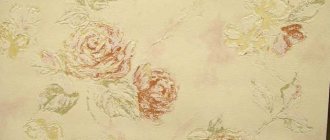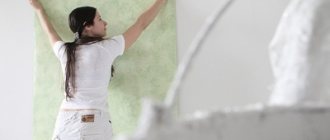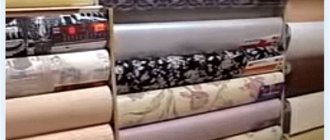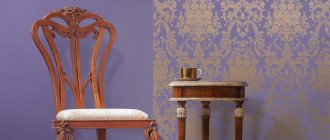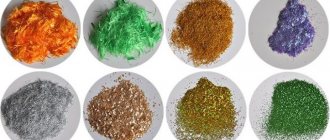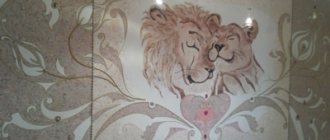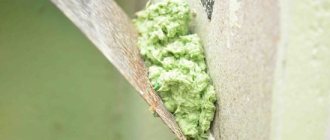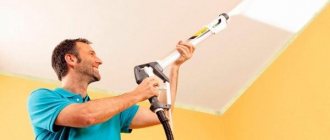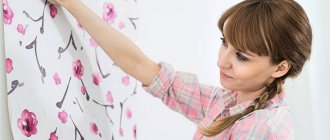Why do you need wallpaper labeling?
Deciphering the characteristics of the product on the roll makes it possible to thoughtfully choose the material for pasting any room. Products have a wide range, which can lead to the risk of choosing a product whose properties are not suitable for a specific apartment or office. In the future, an unsuccessful purchase may lead to the wallpaper peeling off, and the repair will need to be done again.
Before starting finishing projects, you need to take seriously not only the designers’ advice on the color and pattern of wallpaper that suits the interior, but also their structure. You should draw up a plan in advance, a bill of materials for the project, select designer chairs and furniture to match them, make drawings and visualizations in the form of collages in order to be able to make edits before you start gluing the canvases.
To get the job done right the first time and not have to redo it, you should carefully study the label on each roll before purchasing wallpaper. There you can see different small icons that will help you choose the right canvas. This information will make the decision much easier, help you correctly calculate the exact amount of material, and will also help you save money and time on the project.
Decoding the numbers on the packaging
For example, let's take packaging from a well-known wallpaper manufacturer. She's like this:
What do these numbers mean? The information is no less useful. The decoding is as follows:
1. Article. It indicates the code number, product design. This is appropriate, because if the batch is over, and there are not enough rolls for gluing, then it is easy to buy more of the same.
2. Batch number. Indicates the production line number, indicates the change and coloring features. When buying rolls, it is better to choose the same batch number so that the tone does not differ, this also happens.
Size 3. Allows you to find out the width and length of the strips in one roll. This is important when calculating the required amount of material per room.
Letter designations
Sometimes the full composition of materials is indicated on the rolls, but more often there is a letter marking with the following designations:
- A. Acrylic. A paper-based product with acrylic foam on the top layer.
- B. Paper. The cheapest wallpaper available to everyone. There are single-layer, multi-layer and washable products.
- BB. Foamed vinyl. The surface of this material is voluminous and textured.
- PV. Flat vinyl. These are vinyl products with a flat relief that have undergone additional pressing.
- RV. Embossed vinyl. Products made of vinyl and having a non-woven base and a relief pattern.
- PAGE Structural for painting. The material they are made of is paper or non-woven fabric; they have a structured relief and require additional coloring.
- STL. Glass wallpaper. Made of fiberglass and have high environmental friendliness, strength and fire safety.
- TKS. Textile. Products based on fabric fibers.
Such letter designations are necessary to choose the best canvas for a particular room. Paper products are definitely not suitable for the kitchen, since they will not last long there. This coating is more relevant for a bedroom or nursery in two-room or three-room apartments.
Vinyl and non-woven wallpapers are characterized by increased strength and resistance to moisture, and their textured surface will fit well into designs in various styles: Scandinavian, classic, euro, minimalism, art, hi-tech and others. Stylish designer chandeliers will look good on the ceiling in such rooms.
Fiberglass wallpaper is the most durable and safe; it is good to glue it in a house with small children and animals.
Definitions for removing wallpaper from the base
Removed without residue
Symbol meaning: Removed without residue
Description of the symbol: Wallpaper that can be completely removed from the base by hand when dry.
Delaminated
Symbol Meaning: Delaminated
Description of the symbol: Wallpaper in which, in a dry state, the top layer can be completely removed manually from the bottom layer remaining on the base.
Moisturized for removal
Symbol meaning: Moisturized for removal
Description of the symbol: Wallpaper that can be removed from the base with a scraper after moistening with water and (or) treatment with water vapor or an organic solvent.
Wallpaper is removed dry
Meaning of the symbol: Wallpaper is removed dry
Description of the symbol: Wallpaper can be removed dry.
Moisture resistance
If in the future you plan to wash the wallpaper or the product will be located in rooms with high humidity, you should choose rolls with a “wave” mark. Also, using this marking you can determine what kind of care is acceptable for the product:
- One wave means that the product can be glued in rooms with high humidity. Fresh stains on them can be removed with a damp sponge without any special products.
- Two waves indicate washable material. You can clean the canvas with a damp sponge and mild detergents; grease and oil stains will not be removed.
- Three waves allow wet cleaning using any detergents, with the exception of abrasive ones.
- The brush implies the ability to clean the sheet with a dry brush.
- One wave and brush mean wear resistance of the material. The product is cleaned using a damp sponge or brush.
- Three waves and a brush indicate cleaning from any dirt. In this case, you can use a soap solution, a brush, water, as well as weak and abrasive detergents.
You should pay attention to such wallpaper when decorating walls in the kitchen, bathroom or combined bathroom.
What other symbols will tell you about
In addition, the roll label may contain emblems that act as international quality marks. This emblem is a guarantee that products are harmless to human health and the environment. This mark indicates that the manufacturer guarantees product compliance with European directives on the quality of building materials. We hope that now our article will help you decipher any designation of icons on the wallpaper, and you will cope with the repair without difficulty and unnecessary hassle.
- home
- Articles
- What is wallpaper rapport
Rapport is the part of the pattern that is repeated. The cyclical pattern of wallpaper.
From the French word rapport - relationship (connection).
The picture shows stripes of pasted wallpaper and a repeating pattern, which is called rapport. In this example, wallpaper with a shifted pattern in 1/2 repeat.
What other symbols are there on wallpaper:
Light fastness level
This marking indicates resistance to sunlight. Graphic images on labels come in the following varieties:
- Half sun. Low light fastness. The colors on the canvas will be bright only in darkened rooms or in the case of windows facing north.
- Half sun and plus sign. The level of light fastness is average. The color of the wallpaper will gradually fade.
- Full circle of the sun. The level of light fastness is high. The products are suitable for gluing in bright rooms. They are able to retain color for a long time.
- Solar circle with a plus sign. Excellent light fastness. The product can be exposed to the sun all year round with long-term preservation of its original brightness.
- Two suns. Excellent light fastness. The color is preserved and does not fade throughout the entire period of use of the canvas.
If the windows face the sunny side, it is worth choosing wallpaper with suitable markings to avoid the risk of fading of the products. In a shaded hallway, you can glue wallpaper with low light resistance. In the living room and room with large panoramic windows, it is better to choose the best light resistance, otherwise they will fade in a couple of years.
Marking by joining the pattern
It is not always possible to understand from the pattern on the canvas how to fit the sheets to each other. Manufacturers, using clear images in the form of arrows, make it clear how the sheets should be arranged:
- arrow with an upward direction - all canvases must be glued in the same direction;
- vertical arrows pointing in different directions - counter joining, every second panel must be turned 180°.
- arrows “looking” at each other – the overlay of the pattern on the sheets is made symmetrically;
- horizontal arrows at different levels - the drawing on the next sheet should be shifted by half the height of the drawing on the previous sheet;
- horizontal arrow and zero – arbitrary sticker;
- two lines horizontally and one vertically - for invisible joining, the sheets should be glued with an overlap, and then a cut should be made along the seam.
If you adhere to the marking recommendations, matching the pattern on the wallpaper will not be difficult.
Marking the wall and placing a large picture
Often when gluing wallpaper you have to deal with walls and ceilings that have a slope. The marking method will depend on the degree of curvature of the corners. First you need to measure the height of the room in each of them.
- If there is a slight slope, you need to use a plumb line or a laser level to mark the walls in order to maintain a strict vertical line.
- If the difference is more than 6–8 cm, it is recommended to stick the wallpaper with a pattern perpendicular to the ceiling, without focusing on a plumb line. In such a situation, stripes that are perfectly aligned vertically will appear overwhelmed due to the visual effect created by the sloping surface.
Important! Wallpaper with vertical stripes is glued strictly plumb, regardless of the degree of curvature of the ceiling surface.
- If the ceiling is uneven, wallpaper with a large pattern should be glued in such a way that for the first time the volumetric element of the image is located as far as possible from the top of the wall. Otherwise, the curvature of the surface will be immediately noticeable.
Even with correctly done markings, the pattern of the last strip may not coincide with the first due to the curvature of the surfaces. Therefore, when deciding where to start gluing material with a pronounced image, it is better to choose the most inconspicuous place in the room.
Designations for installation and dismantling of the canvas
In gluing technology, the main thing is the method of applying the glue. On rolls this is indicated by one of three images:
- vertical line with a brush - glue must be applied to the wall;
- roll with a brush - glue should be applied directly to the canvas;
- container with liquid and roll - a layer of glue is applied to the wallpaper, which will be ready for processing after wetting with water.
To remove wallpaper, symbols are used to indicate the features of dismantling:
- brush between thick and thin vertical lines - removed after applying liquid to the canvas;
- arrow next to a thin vertical line - removed without wetting;
- the vertical line is divided into two - the material should be removed layer by layer.
Understanding the labeling of wallpaper will not be difficult. By following the recommendations, you can easily choose the material for pasting both a one-room apartment and a large country house. Well-chosen wallpaper will delight family members and will last for a long time.
Graphic symbols on the wallpaper
There are quite a lot of graphic symbols on the packaging of rolls. Let's look at the icons indicating resistance to external factors such as moisture and sun, more details in the tables below.
Moisture resistance symbols:
| Water resistance during gluing and further use |
| Wallpaper is washable: small stains can be removed with a damp sponge |
| Super washable wallpaper |
| Can be cleaned with a brush |
| Resistant to high friction |
Designation of light fastness:
| Moderate light fastness |
| Light fastness is average: fades over time |
| Good light fastness |
| Very good light fastness. Retain color for a long time |
| Excellent light fastness |
Let's look at the symbols indicating secrets during pasting in the table below.
| No need to customize the picture |
| Joining the pattern at the same level on adjacent canvases (for example, repeat 64/0) |
| Image offset. Along with this sign, the manufacturer always indicates the amount of repeat and the pitch. (Repeat is the distance in centimeters through which the pattern is repeated) |
| The arrows indicate that we turn the next strip 180 degrees relative to the adjacent strip |
Let's look at an example about pattern displacement. Thus, the designation on wallpaper for walls 64/32 indicates a repeat of the pattern after 64 centimeters, and in order to match it, you need to move the next canvas by 32 centimeters. But rapport 64/0 means that the pattern needs to be joined without displacement.
How to apply glue correctly:
| Apply glue to the wall |
| Apply glue to wallpaper |
| The base is impregnated with glue, you just need to moisten it with water |
Indication for removing wallpaper from the wall:
| Wallpaper is completely removable |
| Removal in layers |
| Before removing, you must first moisten it with water. |
